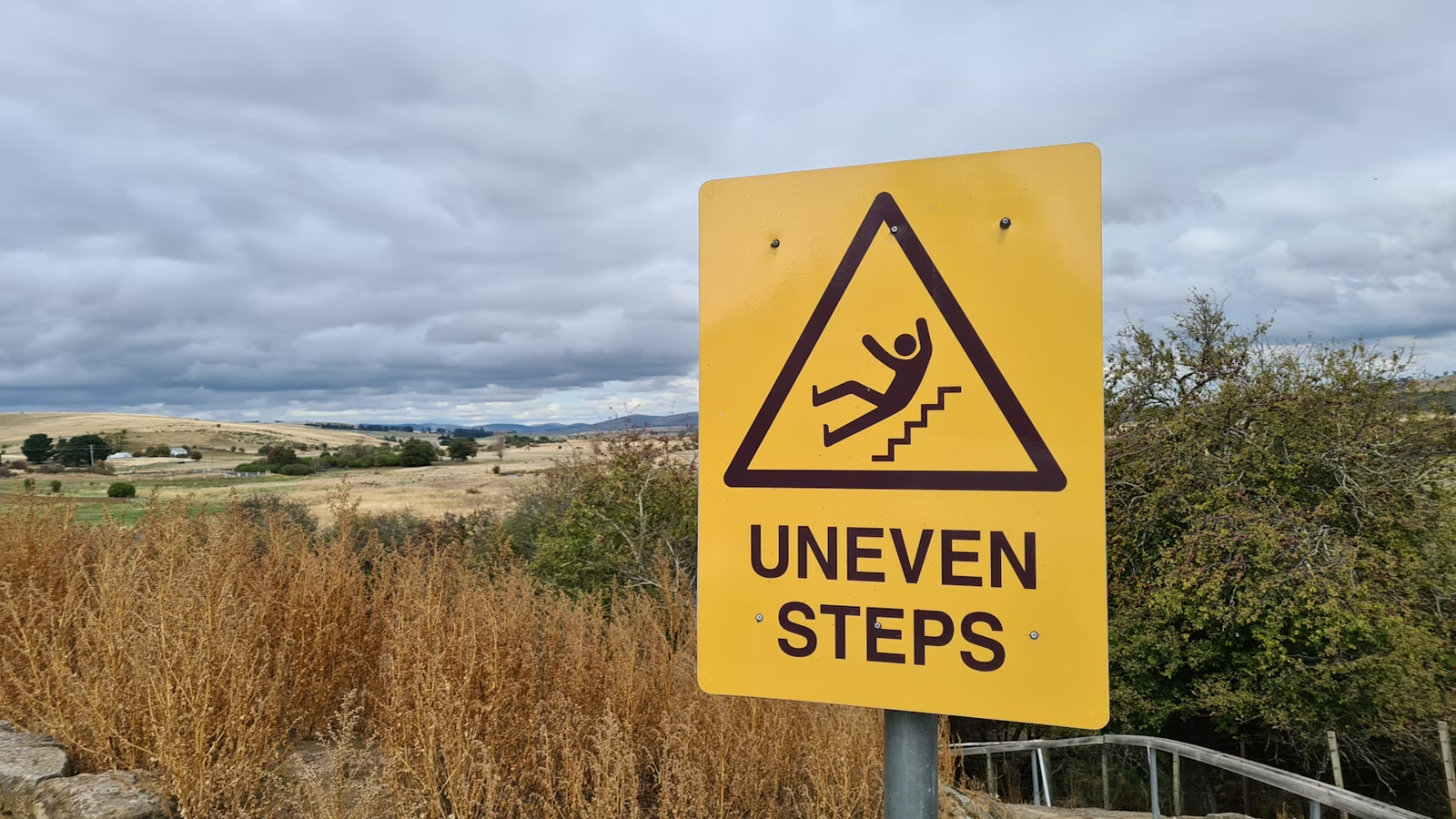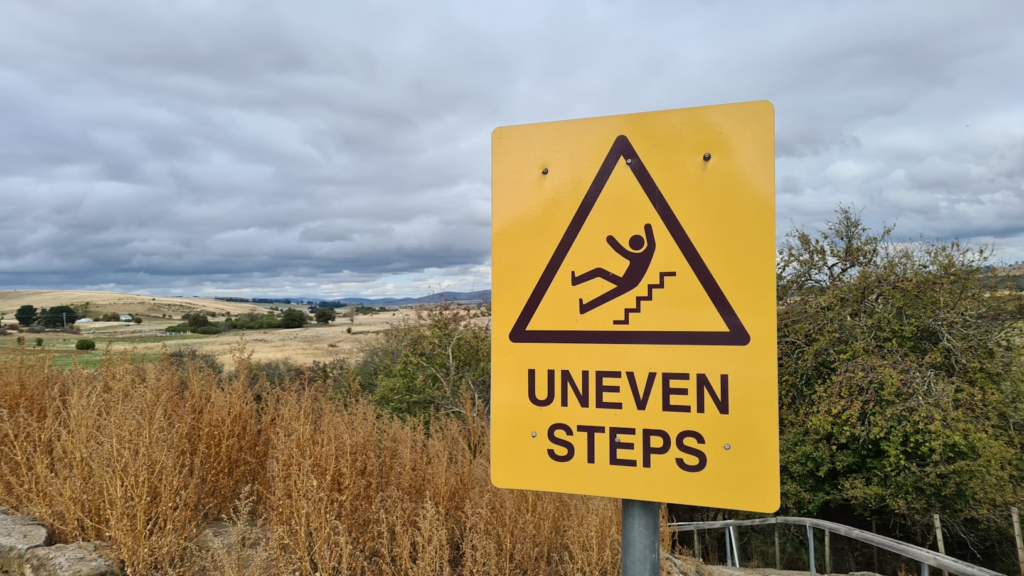Premises liability accidents are an unfortunate reality in our daily lives. From slippery floors in supermarkets to poorly maintained sidewalks, these incidents occur with alarming frequency. More often than not, these slip-and-fall accidents result in serious injuries and costly legal battles.
According to the Centers for Disease Control and Prevention, each year, more than 14 million adults aged 65 and older report collapsing. Not all falls result in an injury. Approximately 37% of individuals need medical treatment or limit their activity for at least one day.

As premises liability cases become increasingly complex, the role of evidence in determining fault and negligence has never been more critical.
Enter smart surveillance systems. High-definition cameras and AI-powered analytics now serve as impartial witnesses, capturing crucial moments that human observers might miss. In the context of premises liability, these systems offer unprecedented insight into the circumstances surrounding slip-and-fall incidents. They have the power to revolutionize how such cases are resolved.
Types of Smart Surveillance Systems
Modern smart surveillance systems have evolved significantly, offering unprecedented capabilities in premises monitoring. High-definition cameras now boast resolutions up to 4K, with some models featuring 360-degree views and low-light performance.
These cameras often incorporate wide dynamic range (WDR) technology. WDR technology preserves features in both bright and dark areas, yielding more balanced and precise image reproduction.
AI-powered analytics have revolutionized motion detection, employing deep learning algorithms to distinguish between humans, vehicles, and animals. Advanced systems can detect specific behaviors, such as loitering or falling, triggering immediate alerts.
Cloud storage solutions enable secure, off-site data retention with scalable capacity. Many systems offer remote access via mobile apps, allowing real-time monitoring and playback from anywhere.
These technologies, widely adopted across the U.S. in retail, healthcare, and corporate environments, are transforming how businesses approach premises liability and risk management. Their implementation, however, necessitates careful consideration of privacy laws and data security protocols.

Legal Admissibility of Surveillance Footage
The Federal Rules of Evidence, particularly Rule 901, mandate authentication of video evidence. State laws, such as California’s SB-1386, further dictate specific privacy requirements for digital evidence handling.
According to the National Institute of Justice, establishing a robust chain of custody is paramount. This process involves documenting every transfer and access point of the footage—from initial capture to courtroom presentation. Authenticity verification often requires expert testimony to confirm the footage’s integrity and absence of tampering.
Privacy concerns are addressed by statutes like the Electronic Communications Privacy Act (ECPA), which regulates the interception of electronic communications.
In public spaces, the “reasonable expectation of privacy” doctrine often applies. According to Forbes, it is a doctrine that allows individuals to hold others, including the government, accountable for privacy violations. However, this right is not absolute. For a claim to hold ground, the individual must have had a reasonable expectation of privacy where the violation occurred.
Best practices for preservation include immediate, secure backup and maintaining detailed logs of all interactions with the footage. Moreover, presentation strategies may involve forensic video analysis to enhance clarity without compromising authenticity. This can ensure the evidence’s persuasive power while maintaining its legal admissibility.
The Role of a Personal Injury Lawyer
Personal injury lawyers play a pivotal role in leveraging surveillance footage for premises liability cases. Their expertise is crucial in navigating the technical and legal complexities of video evidence. These attorneys work closely with forensic experts to authenticate footage, ensuring compliance with the Federal Rules of Evidence.
A personal injury attorney is adept at establishing a robust chain of custody, meticulously documenting each step from initial capture to courtroom presentation. In addressing privacy concerns, they navigate legal statutes, balancing public space recordings against the “reasonable expectation of privacy” doctrine.
According to TorHoerman Law, these legal professionals are instrumental in vetting and preparing crucial evidence. Moreover, they also play a huge role in communicating technical digital information to juries.
Their skill lies in presenting technical evidence in a way that jurors can understand and relate to. By adeptly handling this high-tech evidence, personal injury lawyers often become the linchpin in securing fair compensation for their clients.

Benefits of Smart Surveillance
Imagine a silent sentinel that never blinks, capturing every detail with razor-sharp precision. That’s today’s smart surveillance system—a game-changer in premises liability cases. These high-tech marvels don’t just record; they analyze and predict.
High-definition cameras, often boasting 4K resolution at 60 frames per second, capture micro-details invisible to the naked eye. This level of clarity can be pivotal in identifying the exact moment a hazard forms or an incident occurs.
Advanced AI algorithms now scrutinize footage in real-time, flagging potential dangers before accidents happen. These systems can detect subtle changes in floor reflectivity, indicating spills, or analyze foot traffic patterns to predict high-risk areas.
Moreover, as reported by Security Magazine, integrated sensors in modern surveillance systems can detect minute shifts in the environmental components. They can flag variations in humidity, temperature, and occupancy levels, providing crucial context for potential hazards.
Challenges and Limitations of Surveillance
While smart surveillance systems offer powerful benefits, they’re not without their hurdles. Camera placement remains a critical issue, with even the most advanced systems struggling with blind spots. Optimal coverage often requires a delicate balance between wide-angle lenses and multiple camera setups. Each comes with its trade-offs in image quality and cost.
Moreover, data storage presents another significant challenge. High-resolution footage consumes vast amounts of space, necessitating robust storage solutions and careful retention policies.
According to Kingston Technology, one hour of 4K video requires 45GB of space, compared to 23GB for an hour of 1080p recording. This raises questions about long-term data management and accessibility.
Furthermore, the specter of footage manipulation looms large. Advancing AI technology has made video alteration increasingly sophisticated. This necessitates rigorous authentication protocols and expert analysis to ensure the integrity of the evidence.
And finally, the tension between comprehensive surveillance and individual privacy rights continues to evolve. As systems become more pervasive and capable, striking the right balance between security and privacy becomes an ever-more nuanced legal and ethical challenge.
FAQs
Q1: How do smart surveillance systems enhance premises liability cases?
A: Smart surveillance systems provide high-definition footage and AI-powered analytics, capturing crucial details human observers might miss. They offer objective documentation of incidents, identify hazardous conditions, and can detect potential dangers in real-time. This comprehensive data often accelerates case resolutions and provides clearer evidence for fair compensation.
Q2: What legal considerations are involved in using surveillance footage as evidence?
A: Surveillance footage must comply with the Federal Rules of Evidence, particularly Rule 901, for authentication. A robust chain of custody is crucial. Privacy concerns are addressed by statutes like the Electronic Communications Privacy Act. Best practices include secure backup, detailed logging, and forensic analysis to ensure admissibility.
Q3: What challenges do smart surveillance systems face in premises liability cases?
A: Challenges include camera placement issues and blind spots, extensive data storage requirements, and the potential for footage manipulation. Balancing comprehensive surveillance with privacy rights is an ongoing concern. Additionally, the complexity of the technology often requires expert interpretation to effectively present evidence in court.
As we look to the future, the intersection of smart surveillance and premises liability law promises to redefine property safety standards. This technological evolution challenges property owners, legal professionals, and policymakers to adapt and innovate.
For businesses, investing in advanced surveillance systems may soon become a security measure and a legal safeguard. For you, awareness of these systems empowers more informed decisions about personal safety in public spaces. As we navigate this new landscape, the key lies in striking a balance between leveraging technology for safety and preserving individual privacy rights.



